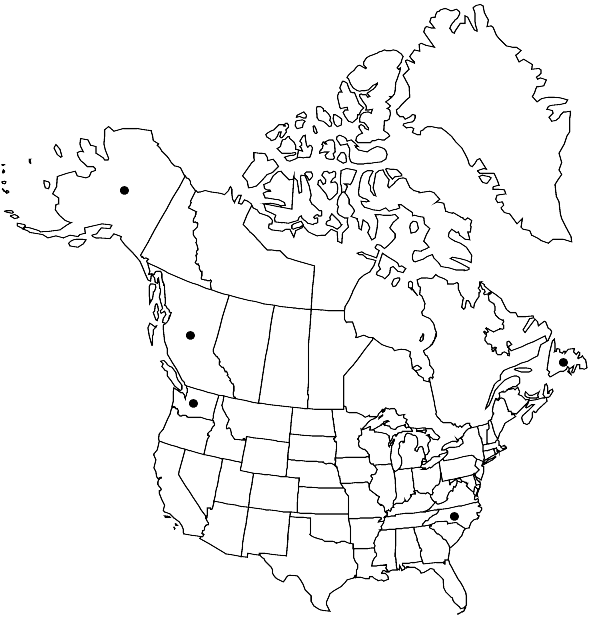Campylopus atrovirens
Syllab. Musc., 221. 1838,.
Plants 1–10 cm, in tall tufts, blackish proximally, yellowish brown distally. Leaves 4–10 mm, straight in wet and dry state, narrowly lanceolate, those of deciduous stem tips often even longer and narrower, ending in a very long subula; alar cells auriculate, hyaline or red-brown; basal laminal cells usually shortly rectangular to subquadrate, thick-walled with pitted walls, 4–8 rows of elongate hyaline cells at basal margins of leaves; distal laminal cells elongate oval to vermicular, walls incrassate; costa filling 1/2–2/3 of leaf width, excurrent in a long, straight, spinose-dentate hyaline hairpoint, in transverse section showing adaxial hyalocysts as wide as the median deuters, and abaxial groups of stereids, weakly ribbed at back. Specialized asexual reproduction by broken stem tips. Seta 4 mm. Capsule 1.5 mm, ovoid, brownish, operculum obliquely rostrate.
Distribution

North America, Europe, Asia.
Discussion
Varieties 2 (2 in the flora).
Campylopus atrovirens is similar to C. sinensis, which differs by shorter, not vermicular distal laminal cells and shorter hyaline leaf tips. The latter has been found only once, in British Columbia, but it could be that collections of C. sinensis from the west coast of North America have been misidentified as C. atrovirens.
Selected References
None.
Key
| 1 | Leaves ending in a hyaline tip. | Campylopus atrovirens var. atrovirens |
| 1 | Leaves ending in a cucullate apex. | Campylopus atrovirens var. cucullatifolius |